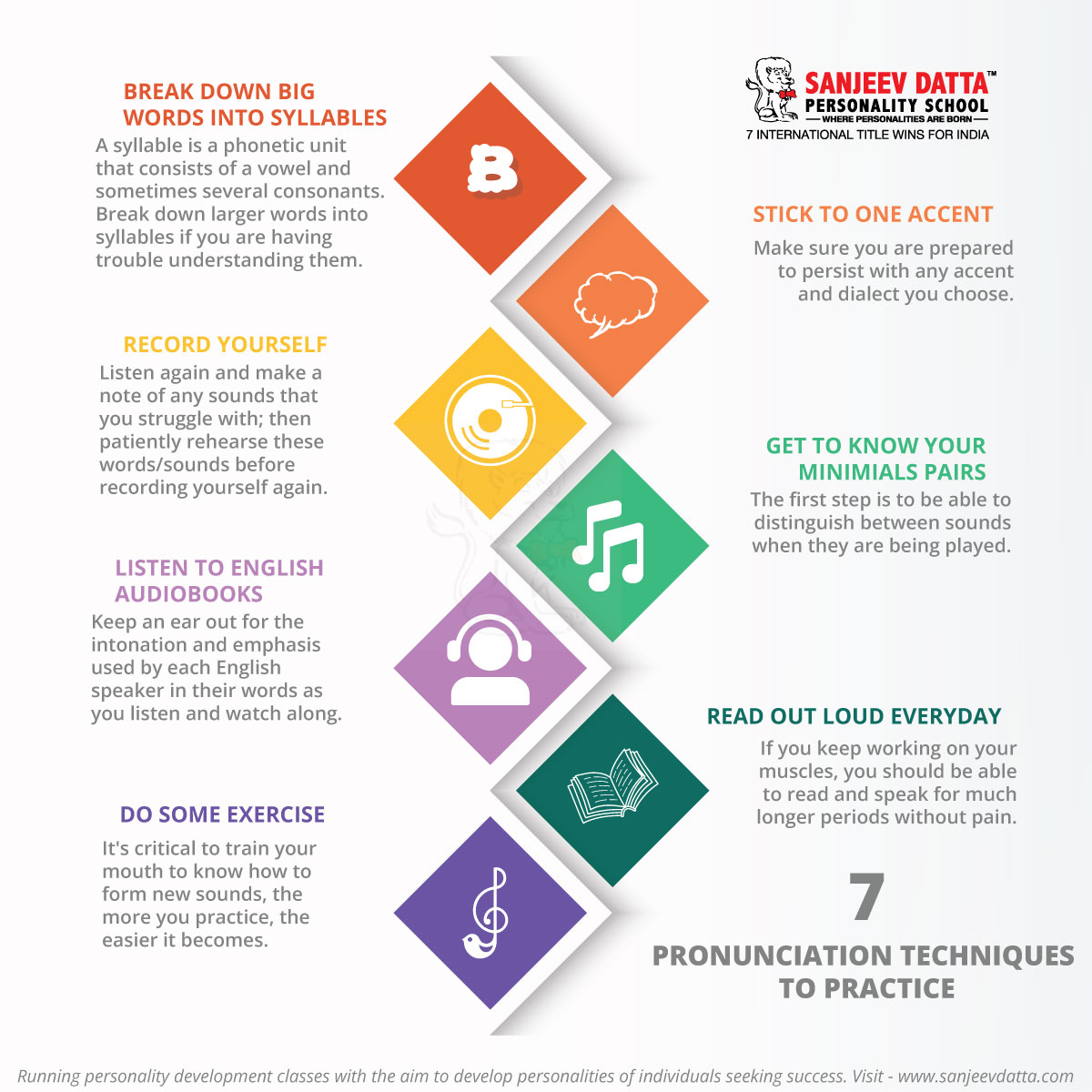Understanding why we want to acquire good singing practices is crucial for novice singers. These are the top 5 vocal techniques that will help singers comprehend and build balanced, coordinated singing, albeit their usefulness varies from person to person. It also depends on where they are in their vocal journey.
5 Vocal Techniques to Practice
- Practice, Practice, and Practice

Let the singing begin! Now is a great opportunity to experiment with your voice and study different singing styles. Defining your basic techniques and putting them into action will enable you to broaden your range and talents as a singer, regardless of your favorite musical genre. Time spent with your vocal & singing will help you cement the concepts you learn in singing lessons.
Schedule regular practice time, pay close attention to your voice, keep a recording of your sessions, and don’t be afraid to experiment with new vocal sounds.
If you’re feeling exhausted or your voice is cracking from strain, stop what you’re doing and either relax or rethink your routine. If discomfort persists for more than a few minutes, you should stop what you’re doing and consult a doctor.
All singers should make it a priority to incorporate vocal hygiene activities into their routines in addition to learning the correct technique.
Get enough sleep, eat well (but not late), and practice mindfulness and exercise to deal with the stresses of daily life.
Singing is a form of communication. It is a way to express yourself. Consider taking personality grooming classes to become better at communication and in turn good at singing.
2. Tuning in on the Same Frequency

One of the most fundamental techniques of successful singing is learning to sing in tune with other singers. Although some people have a natural knack for it, everyone can educate themselves to sing in tune. If you’re afraid about not being able to sing in tune, know that you can if you put in the effort. First, try matching the pitches of a piano, guitar, or tone-generating app on your phone. Always begin with lower notes or tones that are simple for you to sing. Other aspects of your vocal technique may be at blame if you cannot match pitch with higher notes, so practice on your easier notes first.
The key is to imagine how the note sounds in your head before attempting to sing it. Sing it on an “Ah” note after playing it and trying to “hear” it. The process is then repeated with a random selection of other notes. Just 2 minutes in the morning and evening would be ideal for honing this ability. Nowadays, it’s not hard to find a tone or piano note generator on your smartphone and then use it to play the notes while you sing the corresponding pitch.
Visit: ways to read body language
3. Breathing

Consider proper breathing as the “sustenance” for your vocals. One of the keys to singing with a healthy tone is mastering this airflow.
The voice chords must be supplied with air “in coordination,” ideally in a continuous, unimpeded stream. Singing with a lack of chord closure and excessive air pressure results in a breathy sound. Pressed phonation occurs when the vocal cords close before the airflow through the vocal folds has reached a sufficient velocity. Singing with ease and a full, even tone requires a balance between open airways and closed vocal cords. If you want to sing better, you should do this exercise to improve your posture.
In addition to being able to regulate our breath, we must learn to inhale efficiently. Try to maintain a loose jaw and a soft, relaxed throat when you take a breath in. Warming up the voice with lip trill exercises is a fantastic way to practice maintaining consistent breath pressure.

4. Vocal Resonance

Vocal resonance occurs when the sound wave produced at the vocal folds travels through and responds to the reverberation rooms (or resonating cavities) in the vocal tract, primarily the throat and mouth, increasing volume. Imagine a guitar. When a guitar is played, the strings’ vibration is transmitted to the body (resonance chamber), where the sound is amplified and takes on a certain tone based on the guitar’s size and construction components.
Our resonators serve the same purpose when it comes to amplifying and shaping the sound of our voices, which is one of the most remarkable things about speaking with one’s voice. Changing the dimensions of the tongue, lips, jaw, and larynx, for instance, alters the form and size of the resonant chambers in the vocal tract, which in turn modifies how sound waves are reflected and reverberated.
Voice Resonance and Modulation is also part of soft skill which can help in other daily activities. If you are looking to enhance your soft skill, consider connecting with the best soft skills coach.
5. Maintaining a Tone For Longer Time

Air efficiency is required to hold a note for a longer amount of time. When practicing sustains, it’s helpful to think about maintaining a consistent sound from start to finish. The time you hold the note at the beginning is less crucial than this. If you’re at a loss for song ideas, try starting on any note within your comfort zone, maintaining a consistent tone throughout, and working up to holding it for longer and longer. As soon as you feel confident doing so, move on to the next note in your ascending vocal range, and as you get better at each note, try holding it for longer. Coordination of breath support is crucial for sustains, so keep that in mind. This exemplifies how several methods mutually reinforce and supplement one another.
By building muscle memory, you may increase your vocal control and sustain a note for longer without letting it drop in pitch as you sing in different registers. Vocal registers are the voice ranges used for singing at various pitches.
Visit: how to improve voice and accent
Summing Up
Working on these 5 vocal techniques can help you strengthen your vocal instruments and increase your natural range regardless of your voice type or the singing style you prefer.
Why Sanjeev Datta Personality School?
- 20 YEARS OF PIONEERING IN PERSONALITY DEVELOPMENT
- 25 STUDIOS & CENTRES ACROSS DELHI NCR
- 4.7/5 STAR RATING BY OVER 10,000 TEACHERS/SEMINAR PARTICIPANTS
- 1,00,000+ PERSONALITY TRANSFORMATIONS
For more details, contact us now!


